360 Degrees of War: 6 Panoramic Paintings That Make You A Part of the Action

Sir, shouldn’t we we go back for the men in the painting? (Photo: Darren and Brad on Flickr)
Before 3D movies or the Oculus Rift, the only way to really immerse someone in a virtual scene was to just surround them with imagery. To create this proto-VR, circular panoramic paintings ringed by miniature dioramas (also called cycloramas) became hugely popular during the 19th century. Of course many of these artworks depict famous battles ranging from the conflicts of the October War to the Battle of Gettysburg. Because reenacting a war is a pastime that long pre-dates Call of Duty. Gear up for six battles you can relive via analog VR technology.
1. PANORAMA 1453 MUSEUM
Istanbul, Turkey

DUCK! Oh wait it’s just a painting. So real… (Photo: Bilalokms on Flickr)
Just because using the immersive effect of panoramic paintings dates back over a century or more, doesn’t mean that all panoramas are that old. The Panorama 1453 Museum in Istanbul was only opened in 2009, and it uses the classic effect to recreate scenes from the conquest of Constantinople in the museum’s titular year. The painting displays hordes of Ottoman troops sacking the fortresses and troops of the ancient city. Scale cannons and baskets of siege stones are set around the base of the panorama to create a seamless effect as the 2D painting bleeds fairly seamlessly into the 3D display at its base. Istanbul was Constantinople, and here you can see where that all changed.

Real cannons. Fake damage. (Photo: Vivaystn on Wikipedia)
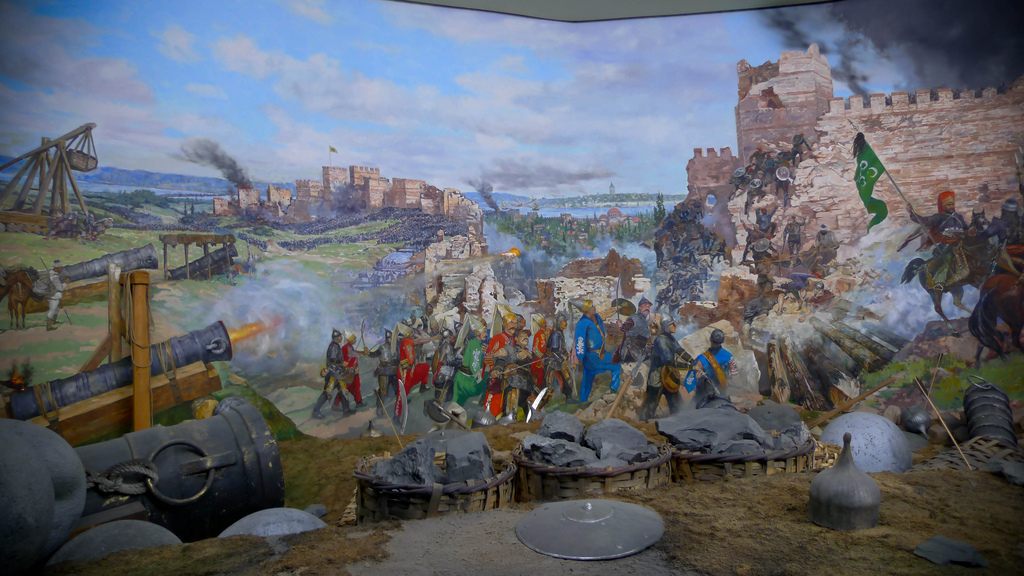
March on, little men. (Photo: Scott Dexter on Flickr)
2. RACŁAWICE PANORAMA
Wroclaw, Poland

That man in the painting looks like he is trying to escape to the real world. (Photo: Andrzej Otrębski on Wikipedia)
Created in 1894, the Racławice Panorama lets visitors put themselves in the midst of the Battle of Racławice, which saw the Polish people rise up against Russian invaders. Using primitive weapons and farm tools such as scythes, the peasant force repelled the Russians in a bold victory. The memorial panorama tells the tale of the uprising across 375 feet of painted fighting. The base is decorated with intricate thatched fences and tiny, scale weaponry, and debris, making the scenes surprisingly life-like. When the Soviets retook Poland after World War II, they closed the display for over 40 years until it was reopened in the mid-1980s. Today, 360 degrees of rebellion are once again open to visitors.
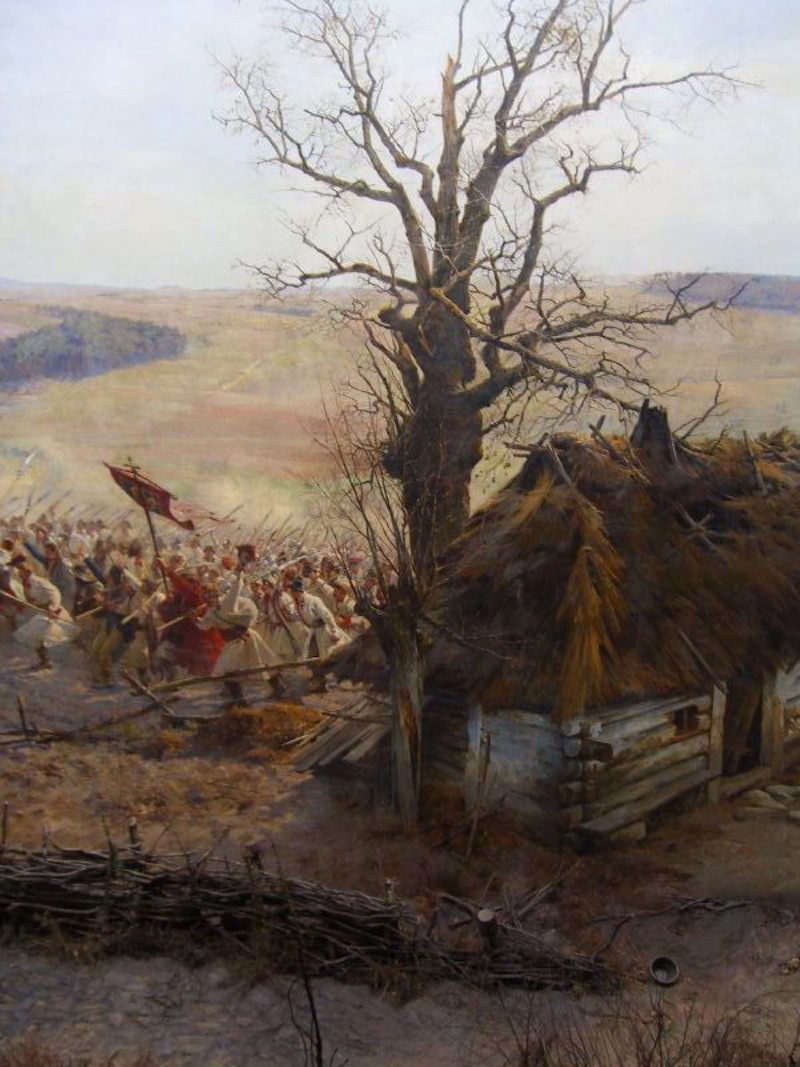
Good thing that fence is there or that mob would have destroyed that house. (Photo: Graham Campbell on Flickr)
3. OCTOBER WAR PANORAMA
Damascus, Syria
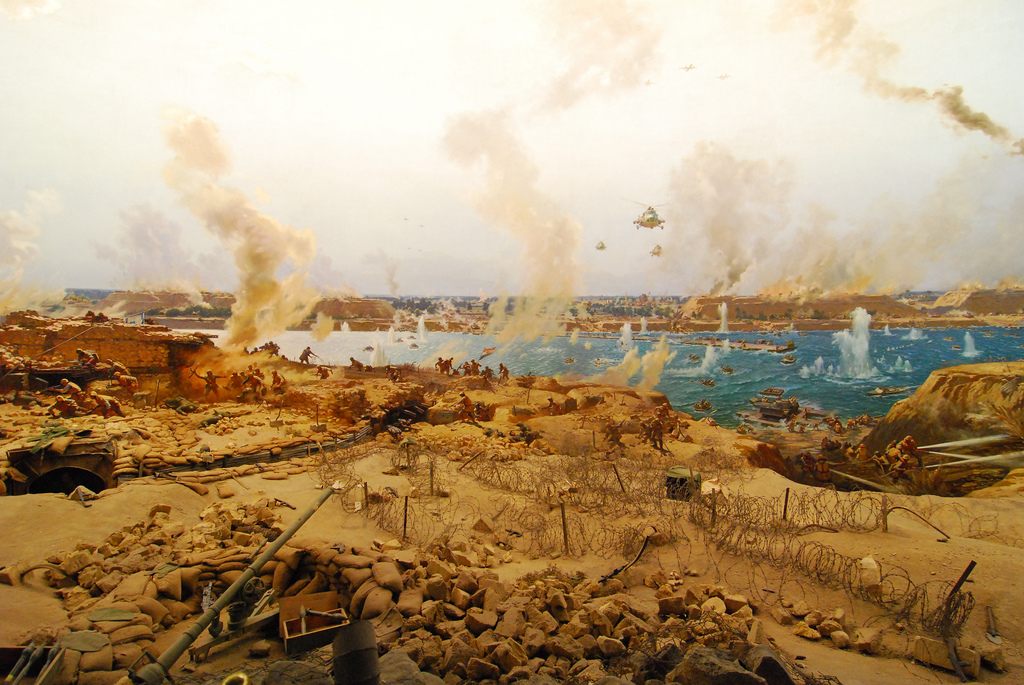
Not a pretty sight. But an engrossing one. (Photo: Paul Keller on Flickr)
This Damascus cyclorama presents the story of the 1973 October War between Israel, Egypt, and Syria, from a decidedly Syrian perspective, with design help from North Korea. Specifically depicting the fight for Quneitra in the Golan Heights, the intricate attraction was built with the help of North Korean labor and backing. The life-like diorama rubble and convincing depth of field in the painting are a troubling work of art to behold. However, slightly more strange and interesting are the brutalist North Korean flourishes found on the outside of the building, reminding all who come to experience the cyclorama, that isn’t exactly politically neutral in its presentation. Although, that could be argued for any recreation of a war.
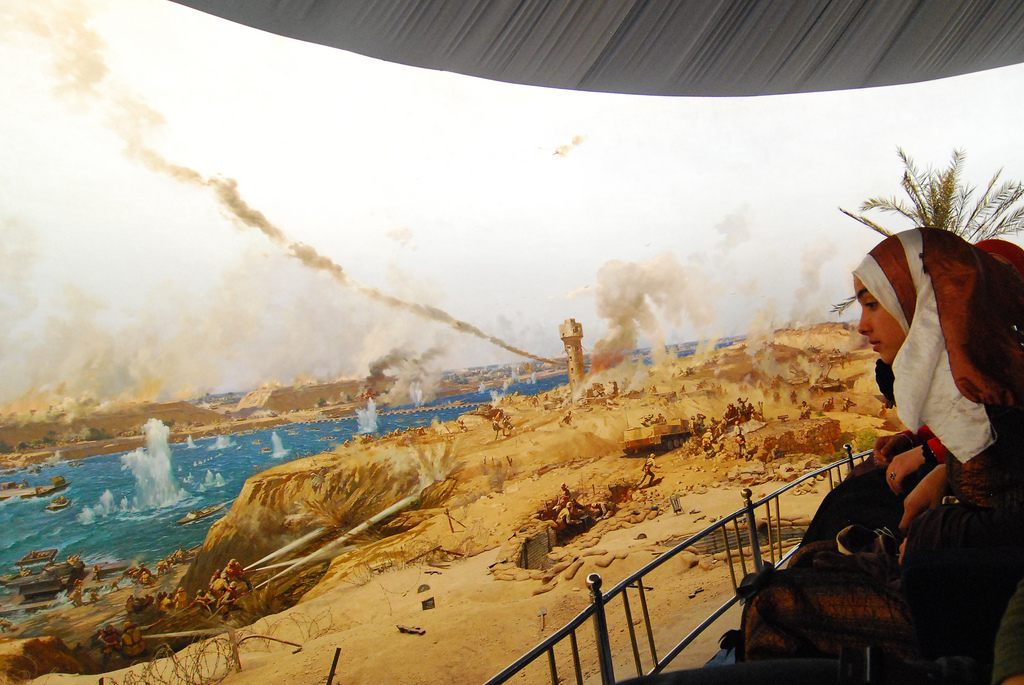
This painting needs a bigger guard rail. (Photo: Paul Keller on Flickr)
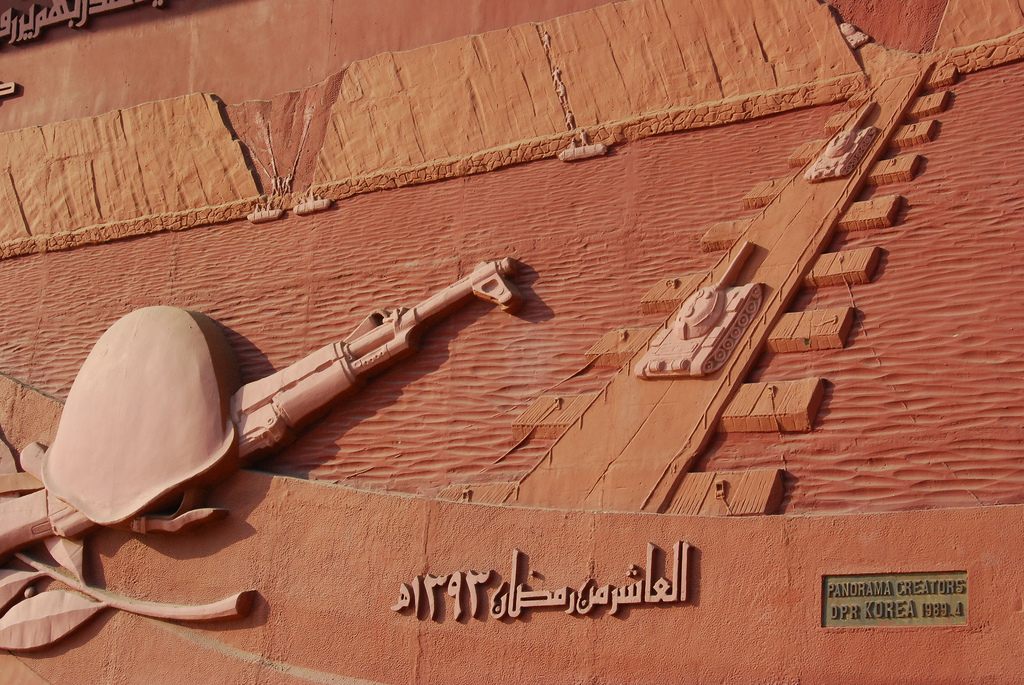
Notice the little plaque in the corner there. (Photo: Paul Keller on Flickr)
4. GETTYSBURG CYCLORAMA
Gettysburg, Pennsylvania
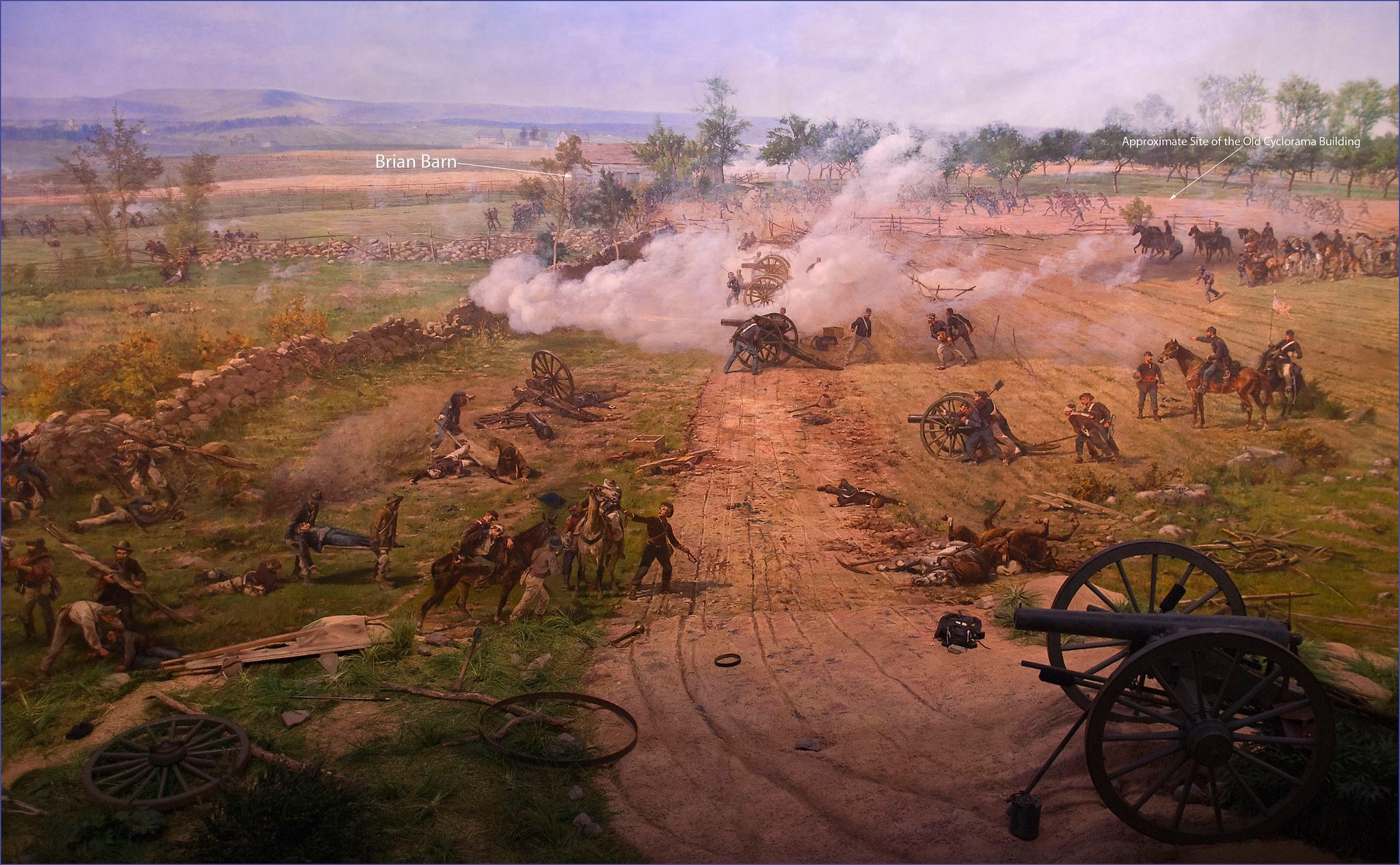
You can actually see some landmarks on this panorama. (Photo: Ron Cogswell on Flickr)
Located in the Gettysburg Museum, this panorama depicting Pickett’s Charge is actually just the remaining copy of popular attraction that had been recreated in a number of American cities. The original painting was made in 1883 in Chicago and proved to be such a hit, that a number of copies were produced. The current panorama in the museum is the one that was once displayed in Boston, all of the other versions were lost. Like other panoramas, the Gettysburg art is made all the more realistic thanks to a miniature battle field that bleeds into the Civil War fighting. As you can see in the image below, there is even a little Lincoln hidden among the figures like a Where’s Waldo? character.
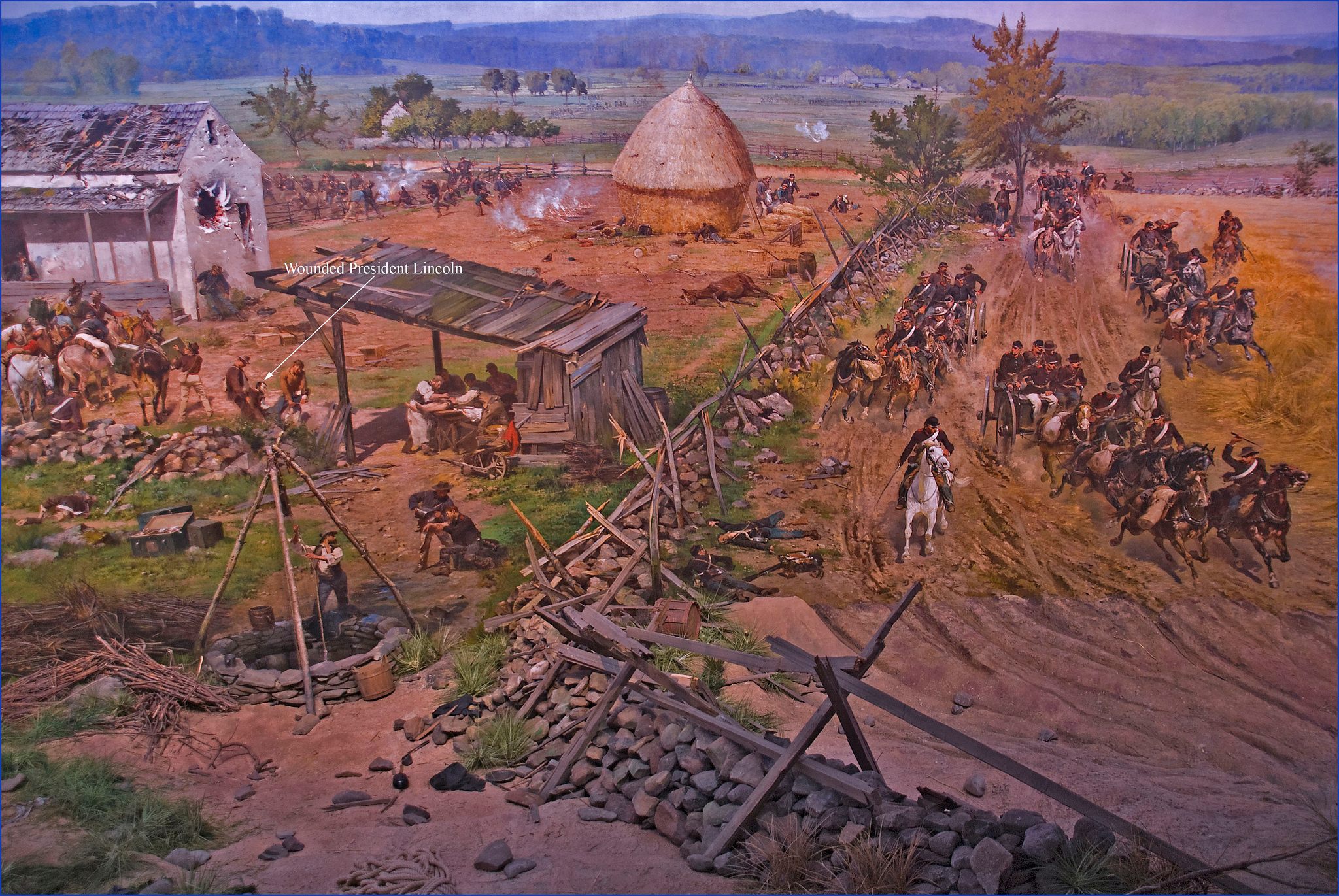
Let’s play Where’s Lincoln? (Photo: Ron Cogswell on Flickr)
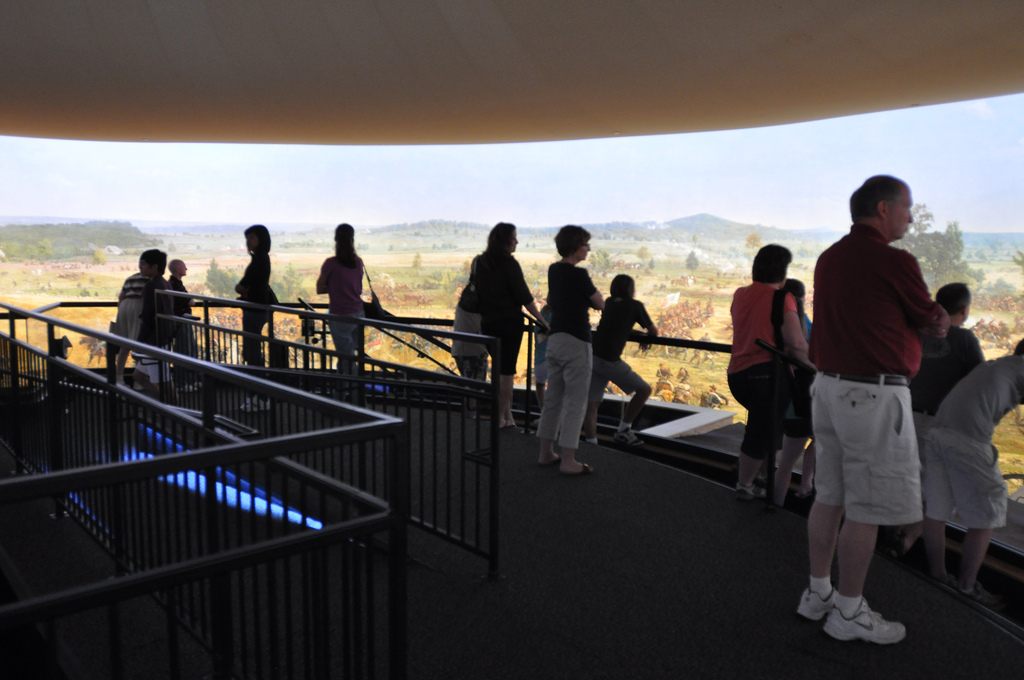
The Gods on Olympus observe the Battle of Gettysburg with indifferent eyes. (Photo: susi.bsu on Flickr)
5. BORODINO PANORAMA
Moscow, Russia
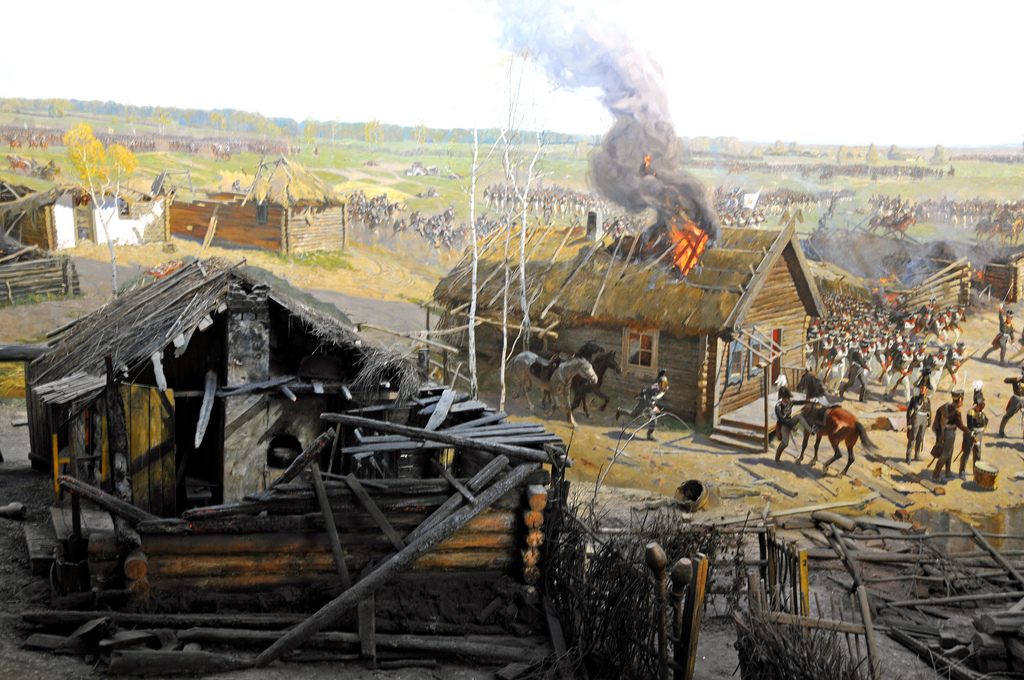
Burning down the house. (Photo by Dennis Jarvis on Flickr)
Another panorama depicting a battle with Russian forces, the round reality of the Borodino Panorama shows the deadliest battle of the Napoleonic Wars. The Battle of Bordino saw French forces attempt to invade Russia in a battle that involved around 250,000 soldiers, resulting in near 70,000 casualties. The panorama shows the destruction that the fighting caused to the landscape and the frighteningly large masses of troops engaged in the battle. As visitors observe the immersive still-image of the battle, the sounds of war fill the room making the experience even more immersive. The Borodino Panorama is a nice place to visit, but you don’t want to have been there.
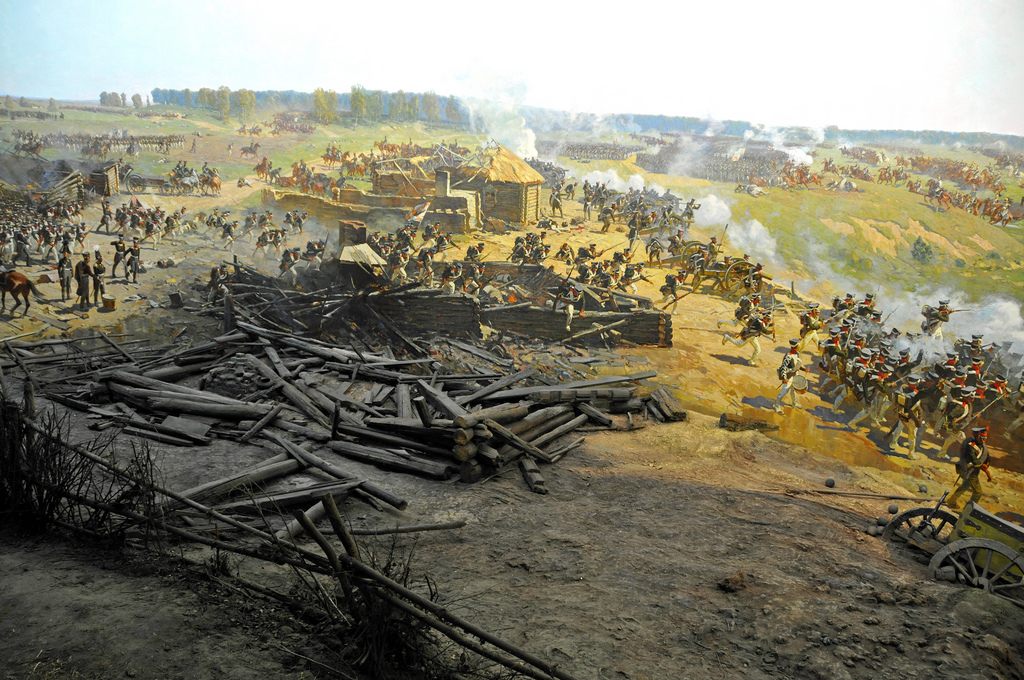
Life during wartime. (Photo: Dennis Jarvis on Flickr)
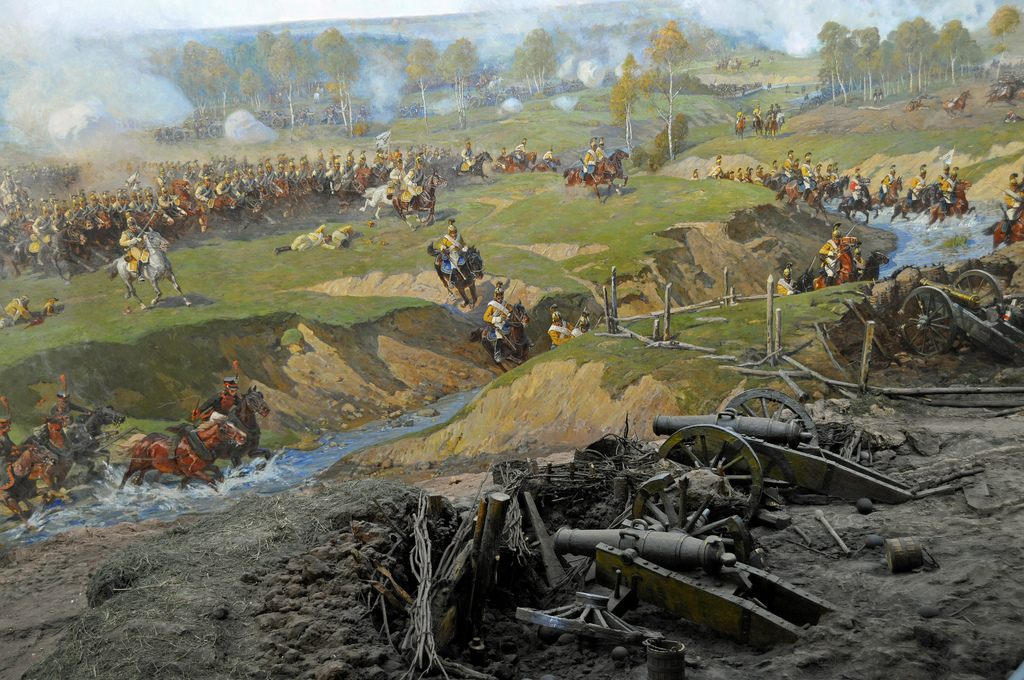
Take me to the river. (Photo: Dennis Jarvis on Flickr)
6. ATLANTA CYCLORAMA
Atlanta, Georgia

Don’t fire ‘til you see the white paint that makes up their eyes! (Photo: Darren and Brad on Flickr)
This Georgia cyclorama, which was once considered to be the world’s largest oil painting, shows the Battle of Atlanta during the Civil War via a 10,000 pound work of art. The original, 42-foot-long (if rolled flat) canvas was first painted in 1885-6, but survives to this day looking surprisingly vibrant. Visitors enter the display through the floor of the space and take a seat as a rotating platform slowly pans them across the battlefield. The giant cyclorama also has 3D models, which were added to the base in 1936, but unlike many surviving cycloramas these dioramas feature figures that stand as tall as three feet high. This is one impressive historic playset.

I found a dead body by the train tracks. Wanna see it? (Photo: London Looks on Flickr)

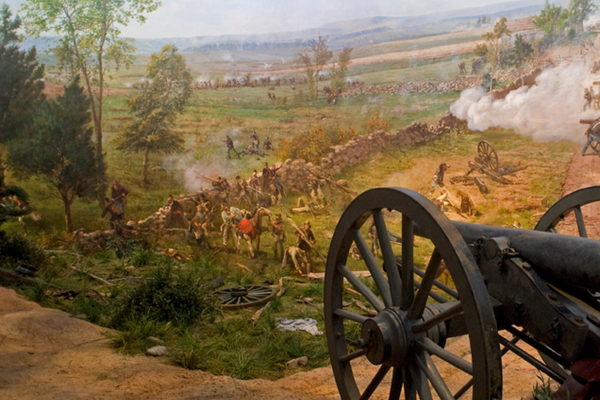
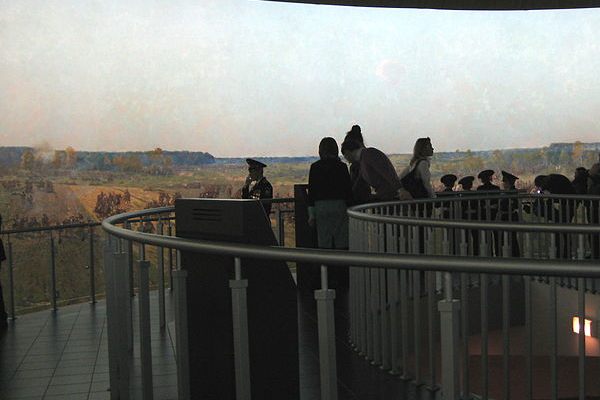

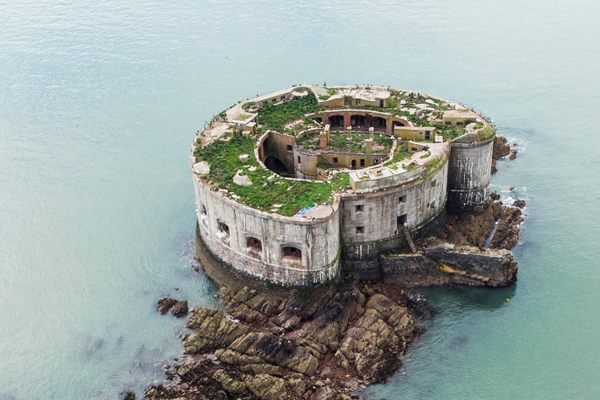




























Follow us on Twitter to get the latest on the world's hidden wonders.
Like us on Facebook to get the latest on the world's hidden wonders.
Follow us on Twitter Like us on Facebook